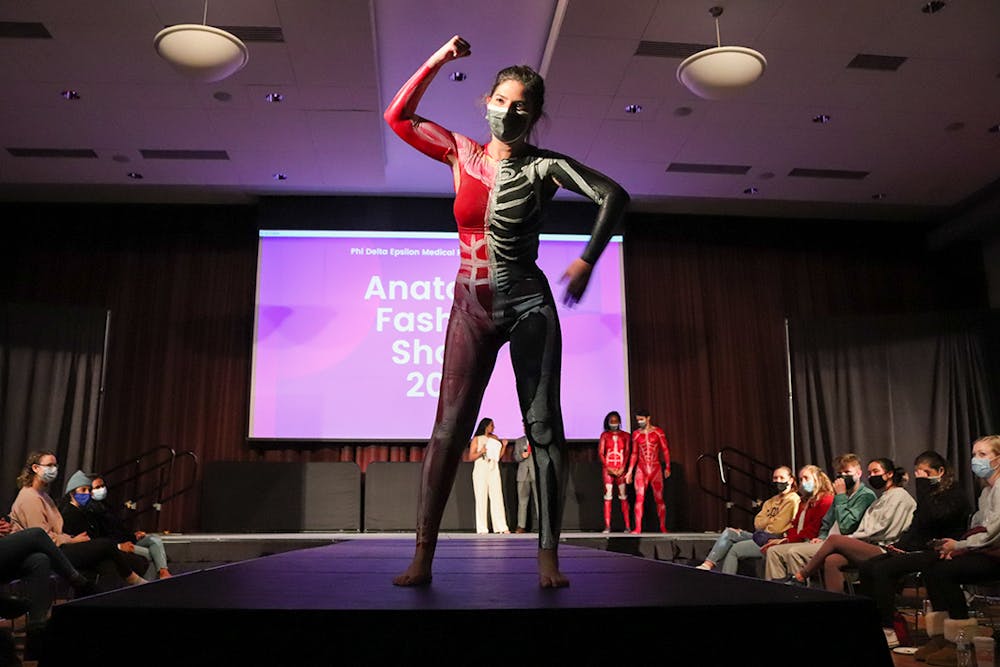Phi Delta Epsilon’s annual Anatomy Fashion Show merges human physiology with visual art and philanthropy, raising thousands of dollars for the Children’s Miracle Network.
Preparation for the Thursday evening event started several hours beforehand for the artists, who spent hours meticulously painting different anatomically correct bodily systems onto dozens of models, who would later strut the runway to fundraise for the cause.
Phi Delta Epsilon is a pre-med fraternity, with a focus on creating multi-faceted medical professionals dedicated to philanthropy and education, according to the chapter's mission statement. One way the fraternity achieves this goal is through the annual organization of the Anatomy Fashion Show.
The organizer of the event was Isabel Stringfellow, vice president of finance and head of philanthropy for Phi Delta Epsilon, who said that the Anatomy Fashion Show aims to educate attendees on the systems of the human body while raising money for a positive source.
“We'll have various months of gestation [in painting], so pregnancy from three months, six months to nine months, the full muscular system, respiratory system, a diseased lung versus a healthy lung, things like that,” Stringfellow, a fourth-year public health student, said. “So it's a great way for people who might not know a lot about anatomy, to kind of see it in person outside of the classroom.”
To raise money, the fashion show charges for entry but also works with local businesses to provide items for a silent auction. Some of the donations included cookies from Insomnia Cookies, gift cards to local restaurants, including Jason’s Deli, and even a signed basketball from USC’s head women’s basketball coach Dawn Staley.
Phi Delta Epsilon, and its more than 45 chapters across the country who also participate in the annual event, donate the funds raised the Children’s Miracle Network, which raises money for children’s hospitals. The fundraising goal for this year is $3,000, but Stringfellow said they hope to even break $5,000 "with ticket sales, donations, silent auction items, things like that."
Student artists from a variety of other pre-med organizations at USC helped the numerous models become adorned with colorful, accurate replications of their organs onto the outside of their bodies.
One of these artists was Katie Klein, a third-year biology and experimental psychology student, whose interest in art and the medical field combine through her participation. Klein said she wasn't limited to painting one model, and painted whoever needed it, because the variety in size of different organ systems differentiated the paint's drying time on the models.
Acapella singing group Cockappella and USC's Moksha, a Bollywood fusion dance group, both performed during the event, and emcees kept spirits light while explaining the information and functions of models' various body organs turned inside out.
Because of the COVID-19 pandemic, the Anatomy Fashion Show took a hiatus in 2020, but Olivia Gary, silent auction chair and fourth-year math student, said she was eager to see the event happen this year.
“Obviously, we couldn’t have it going on during the pandemic, so it's going to be really fun to see everyone back together again,” Gary said.

